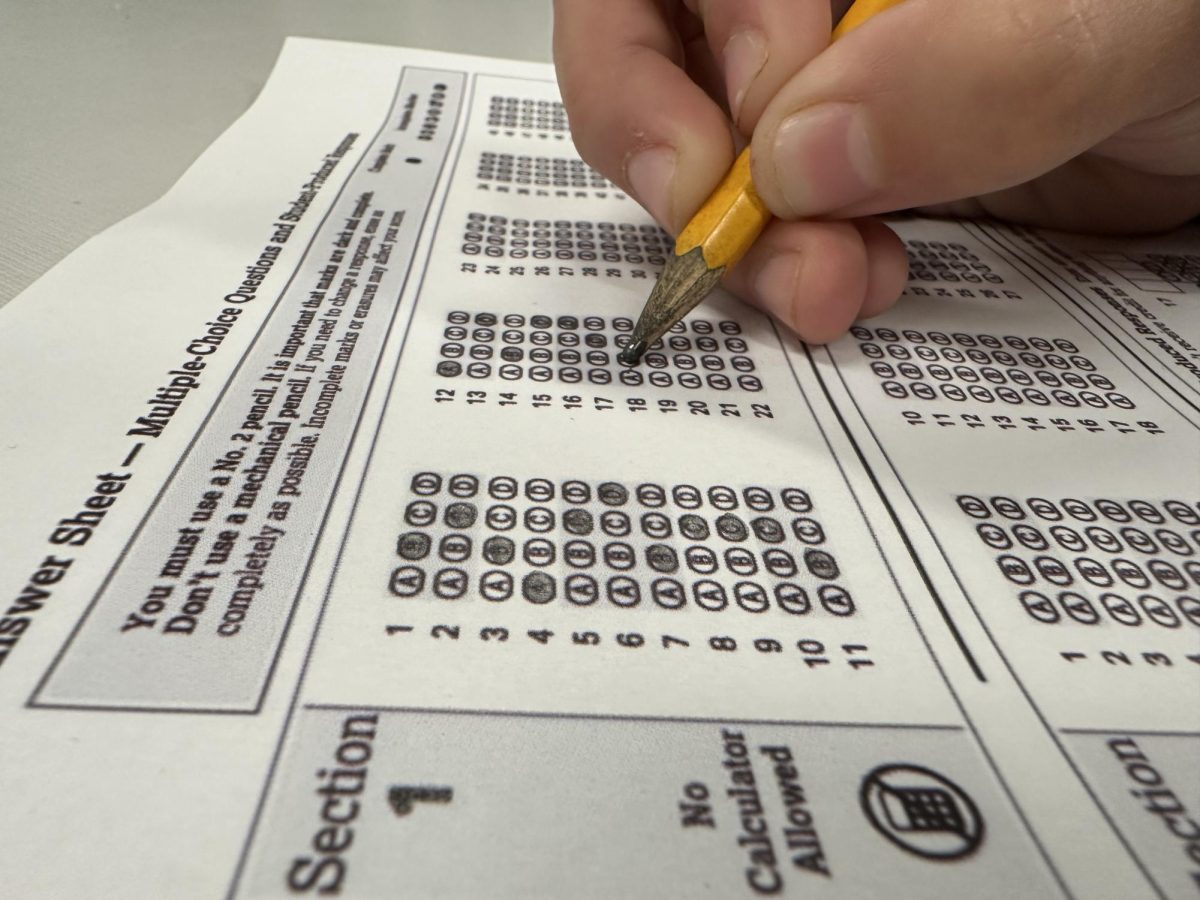Stockpile reveals the layered nature of district inventory management
A copy of "Making Connections: Teaching and the Human Brain" lies tightly packed in a box on the ground while a labyrinth of desks surround it. A carousel slide projector still filled with film sits on top of a popcorn machine. All the while students pass through the area not noticing the grand display of junk jutting out the corner of their eye.
The stockpile between the portables and the F buildings has been a landmark here at MVHS for some time, growing to fantastic proportions during construction periods. But the process for getting things in and out of this storage area makes the location even more hectic.
Created with flickr slideshow.
Items must meet certain requirements before being lugged into the stockpile. According to Assistant Principal Brad Metheany, items that take first priority are furniture and equipment considered hazardous to the learning environment. This includes old desks and chairs that are unsuitable for student use, as well as waste that cannot be disposed of by regular means (for example, turpentine, art supplies, photographic chemicals). The objects that are unusable raw materials, cardboard or scrap metal for instance, make their way out of the stockpile the fastest in way of a recycling center to make an extra dollar for the district.
Metheany, items that take first priority are furniture and equipment considered hazardous to the learning environment. This includes old desks and chairs that are unsuitable for student use, as well as waste that cannot be disposed of by regular means (for example, turpentine, art supplies, photographic chemicals). The objects that are unusable raw materials, cardboard or scrap metal for instance, make their way out of the stockpile the fastest in way of a recycling center to make an extra dollar for the district.
 Metheany, items that take first priority are furniture and equipment considered hazardous to the learning environment. This includes old desks and chairs that are unsuitable for student use, as well as waste that cannot be disposed of by regular means (for example, turpentine, art supplies, photographic chemicals). The objects that are unusable raw materials, cardboard or scrap metal for instance, make their way out of the stockpile the fastest in way of a recycling center to make an extra dollar for the district.
Metheany, items that take first priority are furniture and equipment considered hazardous to the learning environment. This includes old desks and chairs that are unsuitable for student use, as well as waste that cannot be disposed of by regular means (for example, turpentine, art supplies, photographic chemicals). The objects that are unusable raw materials, cardboard or scrap metal for instance, make their way out of the stockpile the fastest in way of a recycling center to make an extra dollar for the district.
The stockpile however consists mainly of items that are designated as surplus. Surplus is a term for labeling district property that is obsolete. The surplus items usually begin to pile up during major renovations, such as the remodeling and development of the school’s academic buildings. Major changes at the district and state level cause the school’s surplus also to swell. For instance, MVHS’ effort to install wall-mounted LCD projectors in every classroom essentially causes all traditional CRT televisions to be designated as surplus and possibly find their way into the pile. This is where the district comes in.
Paperwork needs to be filled out for surplus items before they are labeled with a barcode and logged into a database. They are then sent to the district, where Coordinator of Safety Operations Erik Walukiewicz has a set of polices set out to organize and eventually get rid of the items in an economical manner.
In accordance to the board polices and education codes, he must sent out an email to district teachers asking them if, for instance, they need a CRT television in their classrooms. If so, the television is taken to the classroom; if not, it is tagged as inventory and more paperwork is done to list it as surplus. A third party named Interschola comes in to list and auction off the items on eBay to return money to the district. The length of time it takes to enact these procedures vary.
“It depends how often we hold the auction, usually its every 3 to 6 months but when things come in from the school [all] at once, we’ll need to get rid of it quicker,” Walukiewicz said. "Usually once the school sends stuff to the district, within a year it’s already been auctioned and sold off."
Walukiewicz finds that most of the items that get auctioned off are usually a result of state measures. For example, the governments effort to make California’s youth healthier led to district fat fryers going on auction. The changes brought on by Measure B such as the installation of new turf fields led to district lawnmowers being put on eBay as well.
Although the process leads to results it is not without flaws. Janitor Tony Sousa said that the paperwork necessary for taking the items to the district slows the process and causes the stockpile to enlarge. Since the surplus usually doesn’t go back into MVHS classrooms, its size is solely dependent on paperwork.
Walukiewicz admitted that he does wish the process to change, since some of the unsellable items must comply with the same ed codes, creating a similar stockpile at the district as the one seen here. Metheany expressed his desire for improvements in the system as well.
"I don’t like clutter, especially when there’s students going in and out of that area [the stockpile] all the time," Metheany said.
The easiest method to shrink it would be to hire a larger custodial staff, but more manpower requires more financial resources. According to Metheany, a larger truck would be desirable since more surplus could be shipped off at a time, helping to downsize it. But since none of the work can be privatized, everything is dependent on the paperwork and the district auctions to get it through.
"Sometimes Bureacracy can slow anything down,” Metheany said.






















